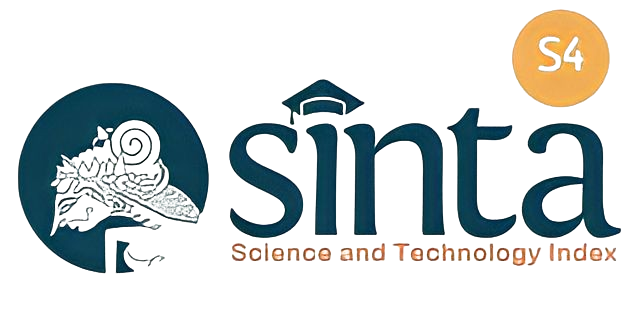Determinan Niat dan Perilaku Berinfak: Sebuah Bukti Empiris dari Muslim Millenials
DOI:
https://doi.org/10.14421/jmes.2022.012-04Keywords:
Infak, Digitization, Muslim, Millennial, ReligiosityAbstract
Infak as one of the Islamic financial instruments that also has a role in encouraging increased welfare and reducing social inequality. This study aims to analyze the determinants of the use of online platforms to pay infak among Indonesian millennial Muslims. This paper provides an enrichment of the determinants of intention to pay infak through a digital platform which of course is expected to be taken into consideration in policy formulation for stakeholders including philanthropic organizations. A quantitative approach with a structural equation model (SEM) was chosen in analyzing the data with the help of the SmartPLS application.3. The research sample was 76 respondents spread across several islands in Indonesia. The existing respondents are determined by the main criteria, namely Muslims aged 24-39 years who represent the Millennial generation. Data collection is done online with the help of google forms which are distributed through social media. Through this study, it was found that social presence, and ease of access to financial facilities have a positive effect on the intention to donate using a digital platform. However, when the variables of religiosity and ease of access were moderated by donating behavior,it was not found significant effect.
Downloads
 Abstract viewed: 464 times
|
Abstract viewed: 464 times
|
 PDF downloaded = 434 times
PDF downloaded = 434 times
References
Abdullah, M., & Sapiei, N. S. (2018). Do religiosity, gender and educational background influence zakat compliance? The case of Malaysia. International Journal of Social Economics.
Afandi, M. Y. (2021). Antecedents of Digitizing ZIS Payments: A TAM and TPB Approaches. Journal of Finance and Islamic Banking, 4(2).
Aji, H. M., Albari, A., Muthohar, M., Sumadi, S., Sigit, M., & Muslichah, I. (2020). Investigating the determinants of online infaq intention during the COVID-19 pandemic : an insight from Indonesia. https://doi.org/10.1108/JIABR-05-2020-0136
Anderson, J. C., & Gerbing, D. W. (1988). Structural equation modeling in practice: A review and recommended two-step approach. Psychological Bulletin, 103(3), 411.
Aristiana, M., Waluyo, B., & Muchtasib, A. B. (2019). Factors that Influence People Interest in Using a Digital Platform as a ZIS Payment (Case Study Go-Pay). 2017.
Ascarya. (2022). The role of Islamic social finance during Covid-19 pandemic in Indonesia’s economic recovery. International Journal of Islamic and Middle Eastern Finance and Management, 15(2), 386–405.
Chen, Y., Dai, R., Yao, J., & Li, Y. (2019). Donate time or money? The determinants of donation intention in online crowdfunding. Sustainability, 11(16), 4269.
Gefen, D., & Straub, D. (2003). Managing user trust in B2C e-services. E-Service, 2(2), 7–24.
Kasri, R. A., & Yuniar, A. M. (2021). Determinants of digital zakat payments : lessons from Indonesian experience. 2019. https://doi.org/10.1108/JIABR-08-2020-0258
Lancaster, L.C. and Stillman, D. 2002. “When Generation Collide :Who They Are. Why They Clash. How To Solve The Generation Puzzle at Work.” 9.
Liu, L., Suh, A., & Wagner, C. (2018). Empathy or perceived credibility? An empirical study on individual donation behavior in charitable crowdfunding. Internet Research.
Manly, B. F. J., & Alberto, J. A. N. (2016). Multivariate statistical methods: a primer. Chapman and Hall/CRC.
Mhd Sarif, Suhaimi, and Rohaziah Yahya. 2020. “Effect of Ta’awun on Management Stickiness of Administrative Zakat Institutions.” Journal of Education and Social Science 15(2):95–101.
Oktavendi, T. W. (2022). Acceptance model for predicting adoption of Zakat , Infaq , and Sodaqoh ( ZIS ) digital payments in Generation Z. https://doi.org/10.1108/JIABR-09-2021-0267
Pongpaew, Wimmala, Mark Speece, and Leela Tiangsoongnern. 2017. “Social Presence and Customer Brand Engagement on Facebook Brand Pages.” Journal of Product and Brand Management 26(3):262–81. doi: 10.1108/JPBM-08-2015-0956.
Putra, Yanuar Surya. 2017. “Theoritical Review : Teori Perbedaan Generasi.” 9(1952):123–34.
Ridho, Zainal, S. L., Siswantoro, & Dodik. (2021). Islamic Social Finance, Modern Slavery of Children, and Sustainable Development Goals in Indonesia. Lecture Notes in Networks and Systems, 487, 729–745.
Sakti, M. R. P., Thaker, H. bin M. T., Qoyum, A., & Qizam, I. (2016). Determinants of cash Waqf contribution in Klang Valley and Selangor: a SEM approach. Journal of Islamic Monetary Economics and Finance, 2(1), 111–144.
Sargeant, A., Ford, J. B., & West, D. C. (2006). Perceptual determinants of nonprofit giving behavior. Journal of Business Research, 59(2), 155–165.
Uyun, Qurratul. 2015. “Zakat, Infaq, Shadaqah, Dan Wakaf Sebagai Konfigurasi Filantropi Islam.” Islamuna: Jurnal Studi Islam 2(2):218. doi: 10.19105/islamuna.v2i2.663.











